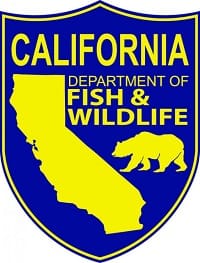California 2013 Sturgeon Report Cards Due by Jan. 31, 2014

The California Department of Fish and Wildlife (CDFW) reminds anglers that they are required to return their 2013 Sturgeon Fishing Report Cards by Jan. 31, 2014. Anglers are requested to review their cards carefully and complete the information as accurately as possible. Information must be submitted regardless of whether or not the angler fished for or caught sturgeon.
Anglers can submit Sturgeon Fishing Report Card data online at www.ca.wildlifelicense.com/InternetSales/CustomerSearch/Begin or submit them by mail. Anglers who prefer to return their Sturgeon Fishing Report Cards by mail should send them to:
CDFW – Sturgeon Fishing Report Card
P.O. Box 944209
Sacramento, CA 94244-2090
Sturgeon Fishing Report Cards are a very important part of a well-developed system to monitor the status and trends of California’s white sturgeon and green sturgeon populations and the popular white sturgeon recreational fishery. The monitoring program uses the Sturgeon Fishing Report Card information from anglers as well as CDFW creel surveys, trip logs from party boats, trip logs from fishing guides, a CDFW mark-recapture study and CDFW scientific trawls throughout the San Francisco Estuary and Delta.
CDFW has been monitoring trends in white sturgeon abundance for decades. Nearly 80 years of trend information is available. The data reveals that large variations in spawning success (often five or more consecutive years of minimal spawning success) have been routine since the 1930s. CDFW believes this variation is due to infrequent near-flooding flows through the Delta during spring months. Managing the population through predictable ebbs in abundance is the key to conservation of white sturgeon and the protection of its fishery.
The white sturgeon population was substantially reduced by commercial fishing in the 19th century and California’s recreational and commercial sturgeon fisheries were (with minor exceptions) closed from 1901 through 1953. Green sturgeon is a threatened species under the federal Endangered Species Act and fishing for green sturgeon is illegal. Only recreational fishing for white sturgeon is allowed and the recreational fishery has become increasingly restrictive over time in an effort to protect the population and fishery.
The white sturgeon fishery is popular even though the catch rate is much lower than it was historically, because white sturgeon flesh is delicious and because, aside from a few types of sharks, white sturgeon are the largest fish anglers are likely to encounter in the San Francisco Estuary and Sacramento-San Joaquin river system. Anglers in recent years have likely been harvesting about 10 percent of legal-sized white sturgeon each year, which is a level the population cannot sustain given observed and expected future spawning success. White sturgeon have only reproduced well twice in the last 15 years (1998 and 2006) and the forecasted drought this year is likely to further reduce spawning success.

